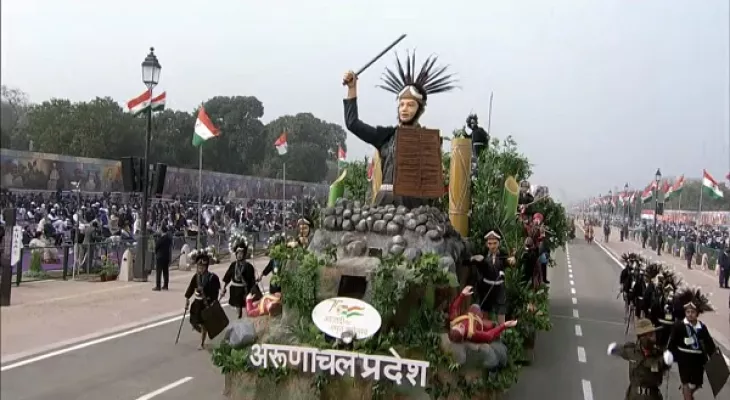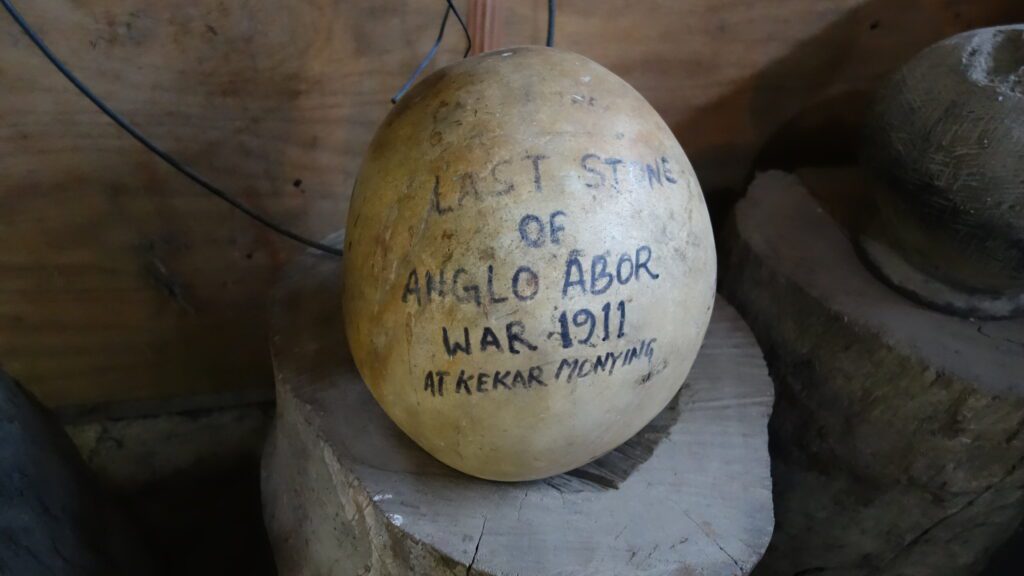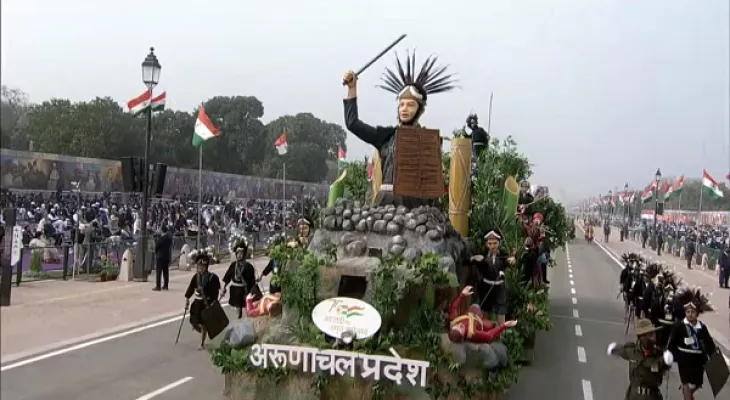The British Empire which emerged as a leading powerhouse of imperialism in the 18th to 21st century succeeded in annexing the Indian Sub-continent.
They confronted the mighty Marathas, defeated the Mughals and the kingdom Mysore, fought two wars against the Sikh empire and the list goes on.
1849 was the year when the British captured the whole of India. The outdated military tactics of the Indians finally collapsed in front of the modern weaponry skills of the European giants.

The powerful kingdoms which dominated India failed in front of the British. But the flames of independence were still alive in the hearts of the remote hills of Arunachal Pradesh.
The Adi Tribe is also known as Abor relentlessly fought against the modern military might of the British to protect their land and kingdom.
The traditional weapons of the Adi people halted the advanced guns and artillery of the British and defeated them in several pitch battles.
The British Raj despite having all the resources, wealth and arsenals failed to conquer the land of the Adi Tribes. In this article, we will cover the story of the Anglo Abor war and the fight for the independence of the Abor tribes.
The famous Abor Hills are home to an independent tribe, the Adi people also called Abors.
Note: The term Abor is an Assamese word, which means independent.
The Adi people were called Abor because the Adi people were considered to be difficult to control and resistant to centralized authority.
The Adi frequently raided the plains of Assamese and had been the object of more than one retaliatory expedition by the British government.
The majority of Adi traditionally follow the tribal Donyi-Polo (Sun-moon) religion.
The British fought the first Anglo Burma war and annexed the territories of the Ahom Kingdom in Assam.
But the land of the Adis remained independent without being annexed or controlled by the British until the last part of the 19th century.
The Adis was considered to be difficult to control and were always resistant to the centralized authority of outsiders. In those days the Adi land consisted of two main axes of power one along the right bank of the Siang and the other on the left bank.
Content
First Face-off
It was in 1826 when the British decided to invade the territories of the Adi people. Under the leadership of Captain Bedford, the British marched towards the Adi territories.
But the natives retaliated strongly and defeated the invaders. The British were never prepared for this disaster and wanted to punish the Adi for this defeat.
This led to a series of four military expeditions.
Anglo Abor Wars
1858 First Anglo Abor war known as Bitbor Mimak
1859 Second Anglo Abor war known as Bongal Mimak

The British forces had to pull back in these expeditions or wars because of the unprecedented strong retaliation offered by the Adi warriors. This was the time when the rest of the Indian subcontinent was under the banner of the Raj but the spirit of the hills of Arunanchal kept fighting for their independence.
The attempts of the British to conquer the first axis of Adi’s power were thwarted. Their vast resources and military might be surrendered in front of the traditional weapons of the Adi people.
Third Confrontation

In 1894 the British changed their tactics and decided to launch an assault on the left bank (second Axis) of Siang. This attack was under the command of JF Needham’s assistant political officer, Sadiya, Captain Maxwell, and Lieutenant East.
Note This expedition centered around Damroh Village- the nerve or command center of Bor Abors (a sub-tribe of Adi).
This third war is popularly known as Nijom Mimak. During this punitive expedition, a series of wars were fought in various locations by the brave warriors of Adis starting from Dambuk village where remains of the ramparts erected by the Adis still exist.
On 25th February 1894, the British expeditionary force was defeated by the Dagem Liireng (sub-tribe) at Sijon after crossing Padu village.
This led to their shameful retreat from the land of Bor Abors without having even to touch the land of Damroh village which the British wanted to capture.
The Bor Abors erected stockades, united huge stones from stiff rock sides, released booby traps used poisoned arrows and other possible means as part of their defense mechanism, and succeeded in repelling the invading forces.
Kengki Megu, Jongkeng Pertin, and Koyi Lego are some prominent Abor Martyrs of this war.
Fourth Anglo Abor War and Legacy of Adi Tribe
By the end of the third Anglo Abor war in 1894 and the beginning of the 20th century, the British realized seriously the bravery, strategy, and strength of Adi freedom fighters.
So, they considered another military expedition to be carried out to penetrate the region via the first axis of Adi power along the right bank.
This led to the fourth and last anglo Abor War in 1911-12. This is known as the Poju Mimak in Arunanchal history. Fought from October 6, 1911, to January 11, 1912.
The Adi Warriors used the conventional skills and weapons of tribal warfare such as bows and arrows, spears, swords, booby traps, stone chutes, etc.
With this, they succeeded in stopping the invading forces for more than three months at the historical battlefield of Kekar Monying. The British force got the upper hand in the war with the help of sophisticated weapons.
However key British officers like Noel Williamson and Greigorson and many sepoys were killed in that war by the famous freedom fighter Matmur Jamoh.
The outnumbered Adi warriors which fought with swords and spears crushed the modern British arsenals of the 19th century for their motherland.
The people of Arunanchal Pradesh take great pride in these unsung freedom fighters, as their ancestors audaciously fought against the colonial regime of the British.
Donate to our Cause
If you support what we are doing and would like to contribute to help us grow and reach more Indians to teach them more about such forgotten historic Indian Heroes and stories, please consider donating any amount. It will help us grow

